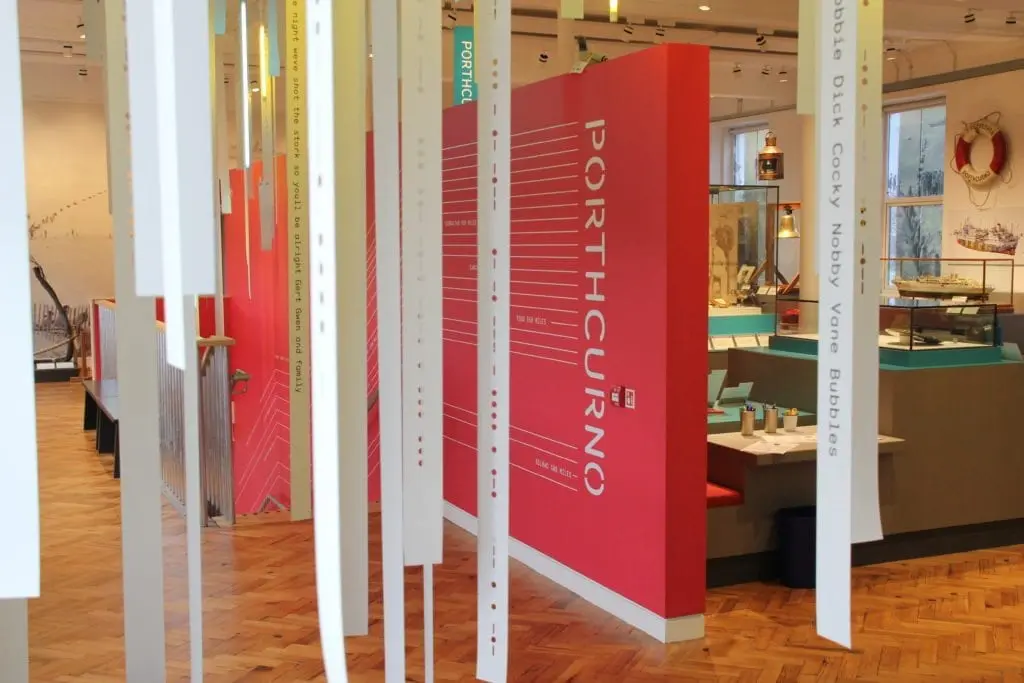Way before the Internet, smartphones, and social media a global communications revolution was taking shape in a tiny coastal village in Southwest Cornwall. The invention of the electric telegraph in 1837 has ushered in a roller-coaster of innovation that has shaped the world we live and work in today.
The first telegraph cable) was landed in Porthcurno in 1870 and stretched nearly 5,000 miles to Mumbai (then known as Bombay) allowing communication in morse code between these two distant parts of the British Empire. The first message to traverse the newly operational telegraph cable was sent on the 23rd June 1870 and it took just five minutes for a reply to be received. Until then communication with British colonies had been unreliable and often messages took months to reach their recipients.
The rise of telegraphy
The cable station at Porthcurno (codename PK or .–. -.- in Morse code) was established by the Eastern Telegraph Company in 1872 and later merged with Marconi’s Wireless Telegraph Company in 1928 to become Cable and Wireless.
By 1920 Porthcurno was the world’s largest cable station with 14 cables leaving the secluded beach and stretching across the world’s oceans. These included among others, a 9,250 mile cable to Perth, a cable stretching 6,250 miles to Hong Kong and a 2,200 mile cable to Newfoundland.
During the Second World War Porthcurno was a prime target due to its importance as a communications hub. The decision was taken to dig tunnels, protected by gas proof doors, deep into the granite of the valley’s east face to protect equipment and personnel from possible attack. The underground complex comprised of two parallel tunnels connected by two smaller tunnels which were cut into the rock by Cornish tin miners between June 1940 and May 1941. In total around 15,000 tons of rock was removed to form the protective “bunker” to house telegraph equipment vital to the war effort.
Life after the telegraph
The last telegraph cable was laid from Porthcurno to Newfoundland in 1952 and the final telegraph connection into Porthcurno was taken out of service in 1970 when the station closed.
Porthcurno continued to play a vital role in global communications. A transatlantic cable known as TAT-7 was landed at Porthcurno, connecting the rest of the UK to New Jersey in 1978 with a capacity to handle 4,000 simultaneous telephone calls. TAT-7 was one of the last transatlantic coaxial cables to be laid and was closely followed in 1988 by TAT-8, a fibre optic cable that had an initial capacity of 40,000 simultaneous calls. While this cable didn’t come ashore at Porthcurno it was still landed in Cornwall (at Widemouth Bay, near Bude on the North coast). Today, six fibre optic cables come ashore at Porthcurno carrying voice, data and video out of the UK and onward to destinations across the world.
Cable and Wireless operated the buildings as a training college until its eventual closure in 1993 after which the remaining buildings, including the tunnels, were acquired by the PK Trust, a charity formed by Cable and Wireless.
Bringing the history of the telegraph to life
Porthcurno Telegraph Museum , operated by the PK Trust, first opened it’s doors to visitors in 1997 and recently completed a nine month renovation and modernisation programme, adding more exhibits and updated exhibition space housed in the historic buildings and tunnels. The renovations greatly enhanced the museums ability to tell the story of telegraphy and the important part played by generations of men and women stationed at Porthcurno and around the world.
As someone who works with social media on a daily basis I found it especially interesting to learn about how important brevity was when sending telegraph messages. With an emphasis on shorter messages, abbreviations and acronyms this made me draw a modern-day comparison with social media, especially Twitter, and how we’re come full circle in how we communicate across the seemingly endless boundaries of the world’s oceans. Another aspect of the newly refurbished museum that caught my eye was the attention to detail when it came to signage (both wayfinding sinage and information boards for exhibits). With consistent colours and text styles it really brought everything together and the designer in me was really impressed by the amount of thought that had gone into its design and implementation.
Porthcurno’s role in global communications continues today with cables still running under the golden sands of its small beach and through the valley connecting the UK to the rest of the world. Without the pioneering work carried out in this quiet valley at the tip of the Cornish peninsula global communications would look very, very different.
Find out more…
Find out more about Porthcurno Telegraph museum on their website, via their facebook page or on twitter.
